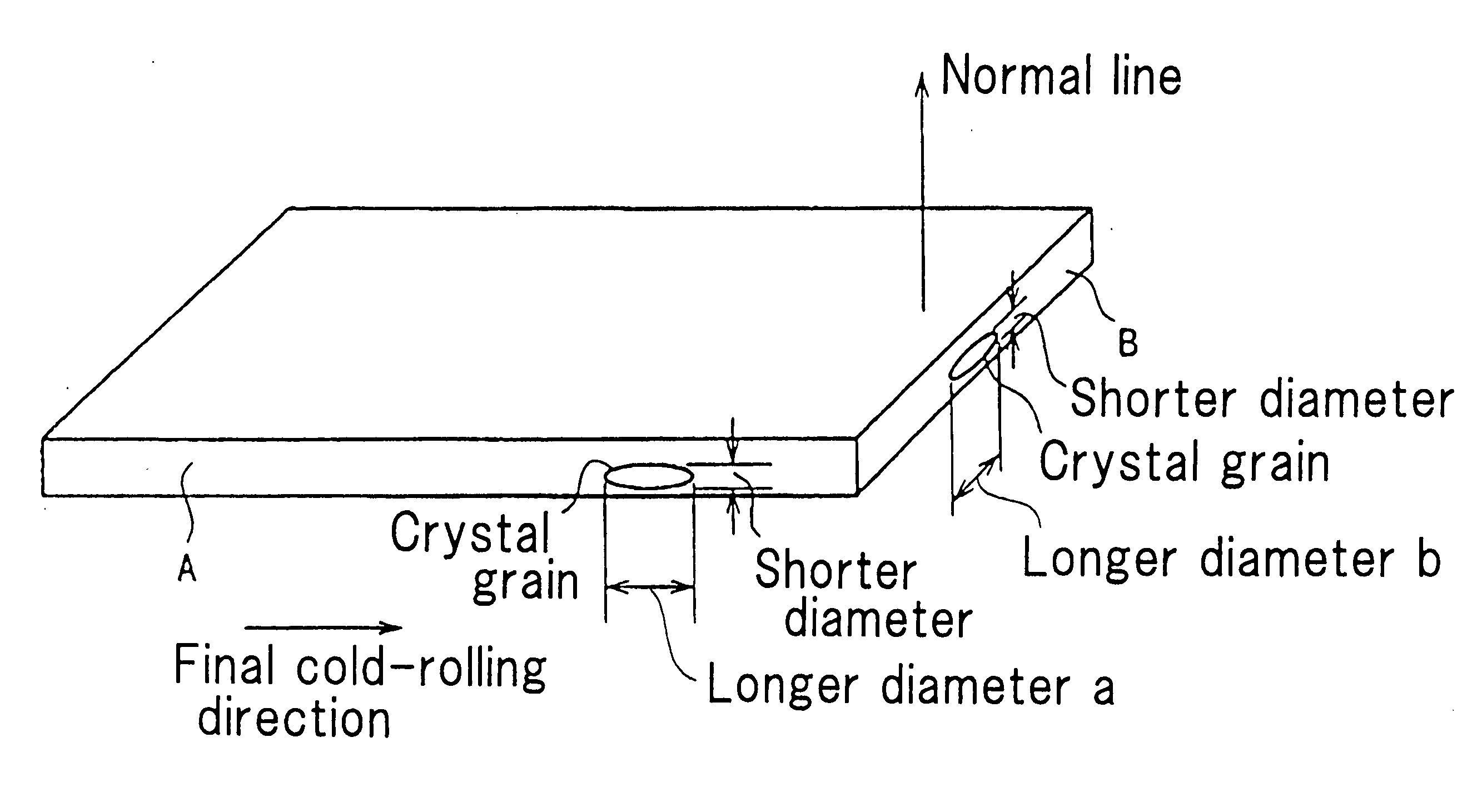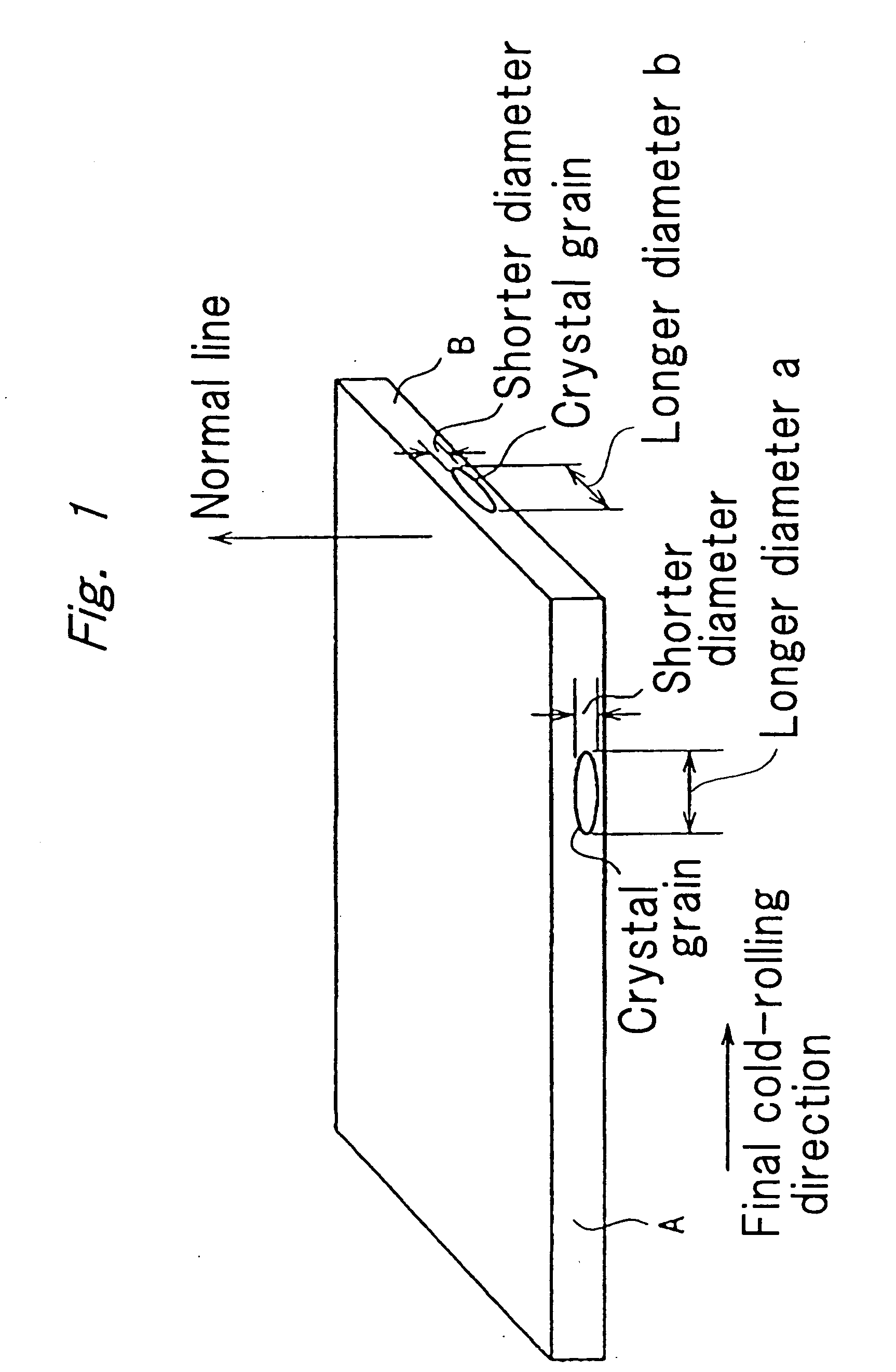Copper alloy material for parts of electronic and electric machinery and tools
a technology of electronic and electric machinery and parts, applied in the direction of coupling contact members, transportation and packaging, contacts, etc., can solve the problems of inability to use for a long period of time, inability to improve the bending property while maintaining mechanical strength and elasticity, and inability to meet the requirements of the current generation
- Summary
- Abstract
- Description
- Claims
- Application Information
AI Technical Summary
Benefits of technology
Problems solved by technology
Method used
Image
Examples
example
[0080] The present invention is described in more detail with reference to the following examples, but the present invention is by no means restricted to these examples.
example a-1
[0081] Copper alloys each having the composition as defined in the present invention, shown in Table 1 (Nos. A to F), were melted in a microwave melting furnace, to cast into ingots with a thickness of 30 mm, a width of 100 mm and a length of 150 mm, by a DC method, respectively. Then, these ingots were heated at 900° C. After holding the ingots at this temperature for 1 hour, they were hot-rolled to a sheet with a thickness of 12 mm, followed by rapid cooling. Then, both end faces of the hot-rolled sheet each were cut (chamfered) by 1.5 mm, to remove oxidation films. The resultant sheets were worked to a thickness of 0.25 to 0.50 mm by cold rolling. The cold-rolled sheets were then heat-treated at a temperature of 750 to 850° C. for 30 seconds, after that, immediately followed by cooling at a cooling rate of 15° C. / sec or more. Some samples were subjected to rolling with a reduction of 50% or less. Then, aging treatment was carried out at 515° C. for 2 hours in an inert gas atmosph...
example a-2
[0097] Copper alloys each having the composition as defined in the present invention, shown in Table 1 (Nos. A to D), were melted in a microwave melting furnace, to cast into ingots with a thickness of 30 mm, a width of 100 mm and a length of 150 mm, by a DC method, respectively. Then, these ingots were heated at 900° C. After holding the ingots at this temperature for 1 hour, they were hot-rolled to a sheet with a thickness of 12 mm, followed by rapid cooling. Then, both end faces of the hot-rolled sheet each were cut (chamfered) by 1.5 mm, to remove oxidation films. The resultant sheets were worked to a thickness of 0.25 to 0.50 mm by cold rolling. The cold-rolled sheets were then heat-treated at a temperature of 750 to 850° C. for 30 seconds, after that, immediately followed by cooling at a cooling rate of 15° C. / sec or more. Some samples were subjected to rolling of 50% or less. Then, aging treatment was carried out at 515° C. for 2 hours in an inert gas atmosphere, and cold rol...
PUM
| Property | Measurement | Unit |
|---|---|---|
| surface roughness Rmax | aaaaa | aaaaa |
| surface roughness Rmax | aaaaa | aaaaa |
| surface roughness Rmax | aaaaa | aaaaa |
Abstract
Description
Claims
Application Information
 Login to View More
Login to View More - R&D
- Intellectual Property
- Life Sciences
- Materials
- Tech Scout
- Unparalleled Data Quality
- Higher Quality Content
- 60% Fewer Hallucinations
Browse by: Latest US Patents, China's latest patents, Technical Efficacy Thesaurus, Application Domain, Technology Topic, Popular Technical Reports.
© 2025 PatSnap. All rights reserved.Legal|Privacy policy|Modern Slavery Act Transparency Statement|Sitemap|About US| Contact US: help@patsnap.com


